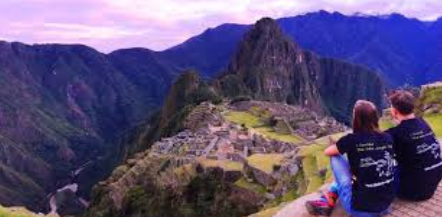Machu Picchu, often hailed as one of the New Seven Wonders of the World, stands as a testament to the ingenuity of the Inca civilization. But beyond its iconic stone terraces and temples lies a vibrant ecosystem—the Machu Picchu rainforest adventure—that beckons travelers seeking a blend of history, nature, and thrill. This UNESCO World Heritage site, nestled in the Peruvian Andes, offers more than just archaeological marvels; it’s a gateway to dense cloud forests teeming with biodiversity. Whether you’re hiking ancient trails or spotting exotic wildlife, a Machu Picchu rainforest adventure promises an unforgettable escape into Peru’s untamed beauty.
In this guide, we’ll delve into the essentials of planning and experiencing your own Machu Picchu rainforest adventure. From historical insights to practical tips, we’ll cover everything you need to make your trip seamless and sustainable. Optimized for those searching for authentic experiences, this article highlights why Machu Picchu remains a top destination for adventure seekers worldwide.
The Historical Significance of Machu Picchu
To truly appreciate a Machu Picchu rainforest adventure, understanding its historical roots is essential. Built in the 15th century during the reign of Inca emperor Pachacuti, Machu Picchu served as a royal estate or religious retreat. Abandoned around the time of the Spanish conquest in the 16th century, it lay hidden under thick vegetation until American historian Hiram Bingham rediscovered it in 1911.
The site’s architecture is a marvel of Inca engineering. Terraced fields, fed by intricate irrigation systems, demonstrate advanced agricultural techniques adapted to the mountainous terrain. Temples like the Temple of the Sun and the Intihuatana stone align with astronomical events, reflecting the Incas’ deep connection to the cosmos. Surrounded by the Urubamba River and towering peaks, Machu Picchu’s location in the cloud forest provided natural defenses and a fertile environment.
Today, historians debate its exact purpose—was it a citadel, a university, or a spiritual center? Regardless, exploring these ruins during your Machu Picchu rainforest adventure offers a profound glimpse into pre-Columbian history. As you wander the stone pathways, imagine the daily lives of the Incas amidst the misty rainforests that have reclaimed much of the landscape.
The Enchanting Rainforest Ecosystem Around Machu Picchu
The Machu Picchu rainforest adventure isn’t complete without immersing yourself in the surrounding cloud forest, part of the larger Amazon basin. This high-altitude rainforest, ranging from 2,000 to 3,000 meters above sea level, boasts incredible biodiversity. Orchids, bromeliads, and ferns carpet the landscape, while towering trees create a canopy alive with birdsong.
Home to over 400 bird species, including the Andean cock-of-the-rock and the spectacled bear (Peru’s only native bear), the area is a paradise for wildlife enthusiasts. The cloud forest’s constant mist fosters unique flora, such as the giant tree fern and rare orchids like the Phragmipedium kovachii. During your Machu Picchu rainforest adventure, keep an eye out for butterflies in vibrant hues and elusive mammals like the dwarf brocket deer.
This ecosystem plays a crucial role in global conservation. The Machu Picchu Historic Sanctuary protects not only the ruins but also the fragile rainforest, which helps regulate water cycles and combat climate change. As climate patterns shift, preserving this biodiversity becomes even more vital, making eco-conscious travel a key aspect of any visit.
Planning Your Machu Picchu Rainforest Adventure
Embarking on a Machu Picchu rainforest adventure requires careful preparation to ensure a safe and enjoyable experience. Start by choosing the right time to visit. The dry season (May to October) offers clearer skies and easier hiking, though crowds peak in July and August. The wet season (November to April) brings lush greenery and fewer tourists, but expect rain and potential trail closures.
Permits are mandatory for entry to Machu Picchu, with daily limits capped at around 2,500 visitors to preserve the site. Book tickets months in advance through the official Peruvian government website or authorized tour operators. For a more immersive Machu Picchu rainforest adventure, consider adding the Inca Trail permit, which allows a multi-day hike through the cloud forest.
Budgeting is key: Entrance fees start at about $50 USD, while guided tours and transportation from Cusco can add $200–$500. Acclimatize in Cusco (at 3,400 meters) to avoid altitude sickness, and pack essentials like rain gear, sturdy hiking boots, and insect repellent. Sustainable operators certified by organizations like Rainforest Alliance ensure your trip supports local communities and minimizes environmental impact.
The Epic Journey to Machu Picchu
The path to Machu Picchu is an adventure in itself, blending transportation modes with breathtaking scenery. Most visitors start in Cusco, Peru’s ancient Inca capital. From there, take a scenic train ride through the Sacred Valley to Aguas Calientes, the gateway town at the base of the mountain.
For the ultimate Machu Picchu rainforest adventure, opt for the Inca Trail—a 26-mile trek spanning four days. This classic route winds through cloud forests, past Inca ruins like Wiñay Wayna, and culminates at the Sun Gate for a dramatic first view of Machu Picchu at dawn. Porters carry gear, and knowledgeable guides share stories of Inca lore.
Alternative routes include the Salkantay Trek, which traverses high mountain passes and dense rainforests, or the shorter train-and-bus combo for those with time constraints. Whichever you choose, the journey immerses you in the Andean landscape, where rivers carve through valleys and mist-shrouded peaks rise dramatically.
Exploring the Ancient Ruins of Machu Picchu
Once at the site, your Machu Picchu rainforest adventure reaches its pinnacle. Begin at the Guardhouse for panoramic views, then descend to the agricultural sector with its stepped terraces. The urban sector features the Temple of the Three Windows, symbolizing the Inca worldview, and the Principal Temple, showcasing massive stone blocks fitted without mortar.
Hike to Huayna Picchu, the peak towering over the ruins, for a bird’s-eye perspective—permits are limited, so reserve early. The trail is steep but rewards with vistas of the winding Urubamba River and surrounding rainforests. For a quieter experience, visit the Inca Bridge, a narrow path carved into a cliffside, highlighting Inca defensive ingenuity.
Guided tours enhance the experience, explaining astronomical alignments and cultural significance. As you explore, the interplay between stone structures and encroaching rainforest vegetation creates a mystical atmosphere, reminding visitors of nature’s reclaiming power.
Thrilling Rainforest Activities Beyond the Ruins
A Machu Picchu rainforest adventure extends far beyond the citadel. In the surrounding cloud forest, ziplining through the canopy offers adrenaline-pumping views of the treetops. Birdwatching tours spot endemic species like the golden-headed quetzal, while botany walks reveal medicinal plants used by indigenous communities.
Venture to nearby hot springs in Aguas Calientes for relaxation after hikes, or join a biodiversity expedition in the Machu Picchu Sanctuary. For multi-day options, combine with Amazon rainforest extensions, where river cruises reveal pink river dolphins and howler monkeys. These activities deepen your connection to the ecosystem, turning your trip into a comprehensive Machu Picchu rainforest adventure.
Sustainable practices are crucial: Stick to marked trails to prevent erosion, and support local artisans by purchasing handicrafts in the Sacred Valley. Engaging with Quechua communities provides cultural insights, enriching your overall experience.
Essential Tips for a Sustainable and Safe Visit
To make your Machu Picchu rainforest adventure memorable for the right reasons, prioritize safety and sustainability. Hydrate frequently and use sunscreen, as UV rays are intense at high altitudes. Respect site rules—no touching artifacts or littering—to preserve this fragile wonder.
Choose eco-friendly accommodations in Aguas Calientes or Cusco, and offset your carbon footprint through reputable programs. Be mindful of weather; sudden rains can make trails slippery. For health, consult a doctor about vaccinations and altitude medication.
Finally, immerse yourself ethically: Learn basic Spanish or Quechua phrases, and tip guides generously. By traveling responsibly, you contribute to the long-term protection of Machu Picchu and its rainforests.
Conclusion
A Machu Picchu rainforest adventure is more than a bucket-list item—it’s a profound journey blending ancient history with natural splendor. From the mist-shrouded ruins to the vibrant cloud forests, this Peruvian gem captivates the soul and ignites the spirit of exploration. Whether trekking the Inca Trail or marveling at biodiversity, the experience fosters a deeper appreciation for our planet’s wonders.
As tourism grows, committing to sustainable practices ensures future generations can enjoy this treasure. Plan your Machu Picchu rainforest adventure today, and step into a world where history and nature intertwine seamlessly. With careful preparation, your trip will be an epic tale of discovery, adventure, and respect for Peru’s enduring legacy.

